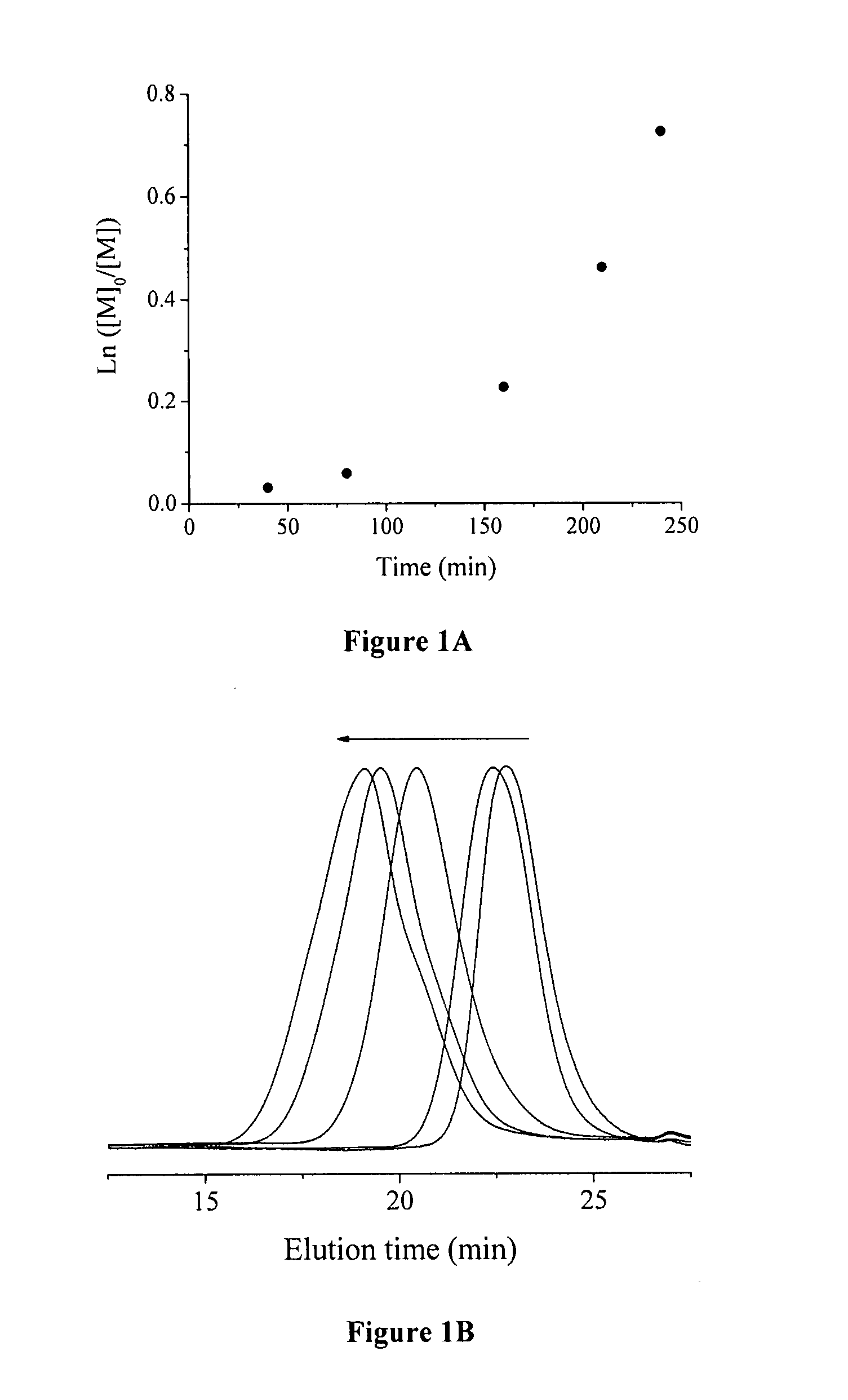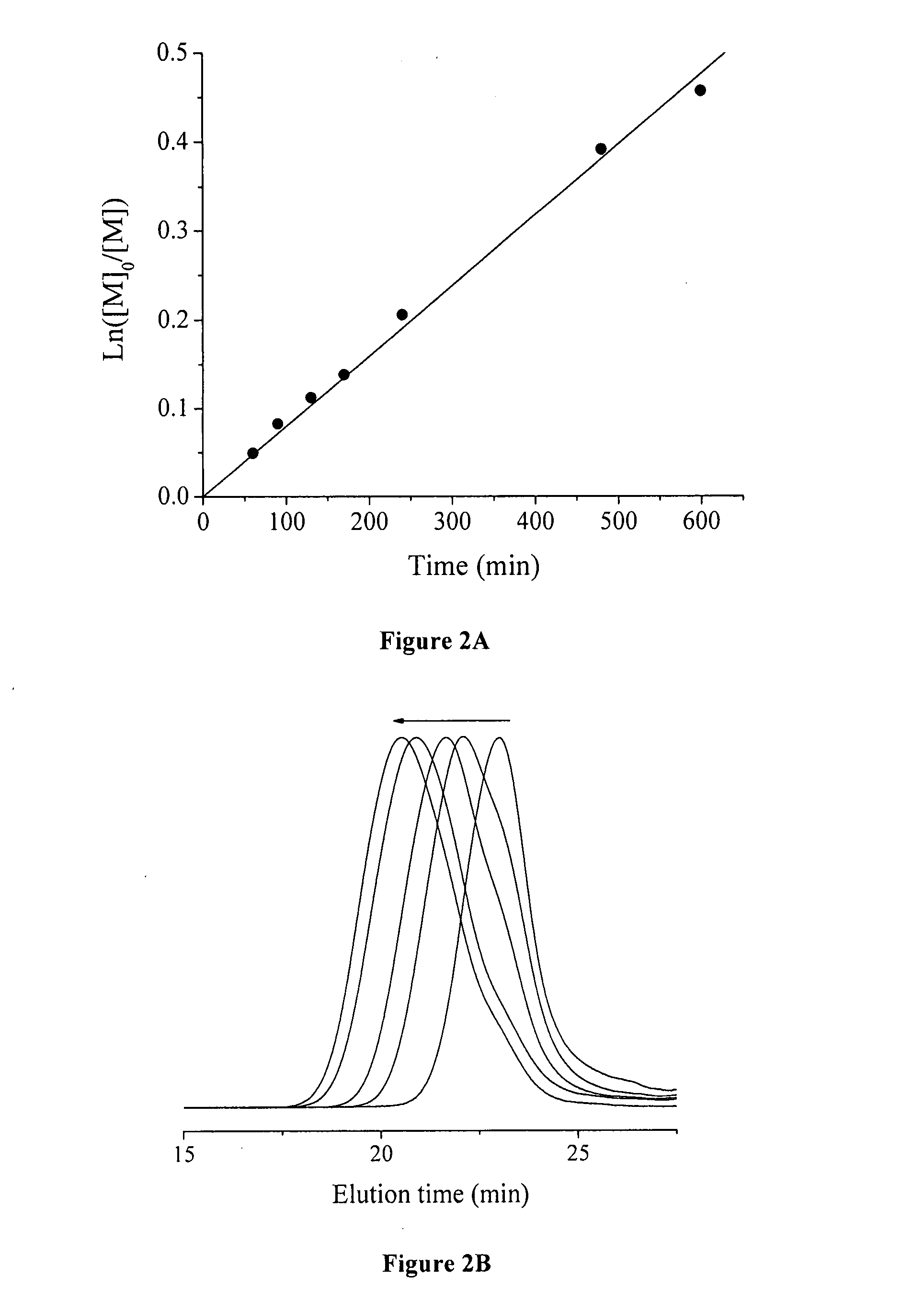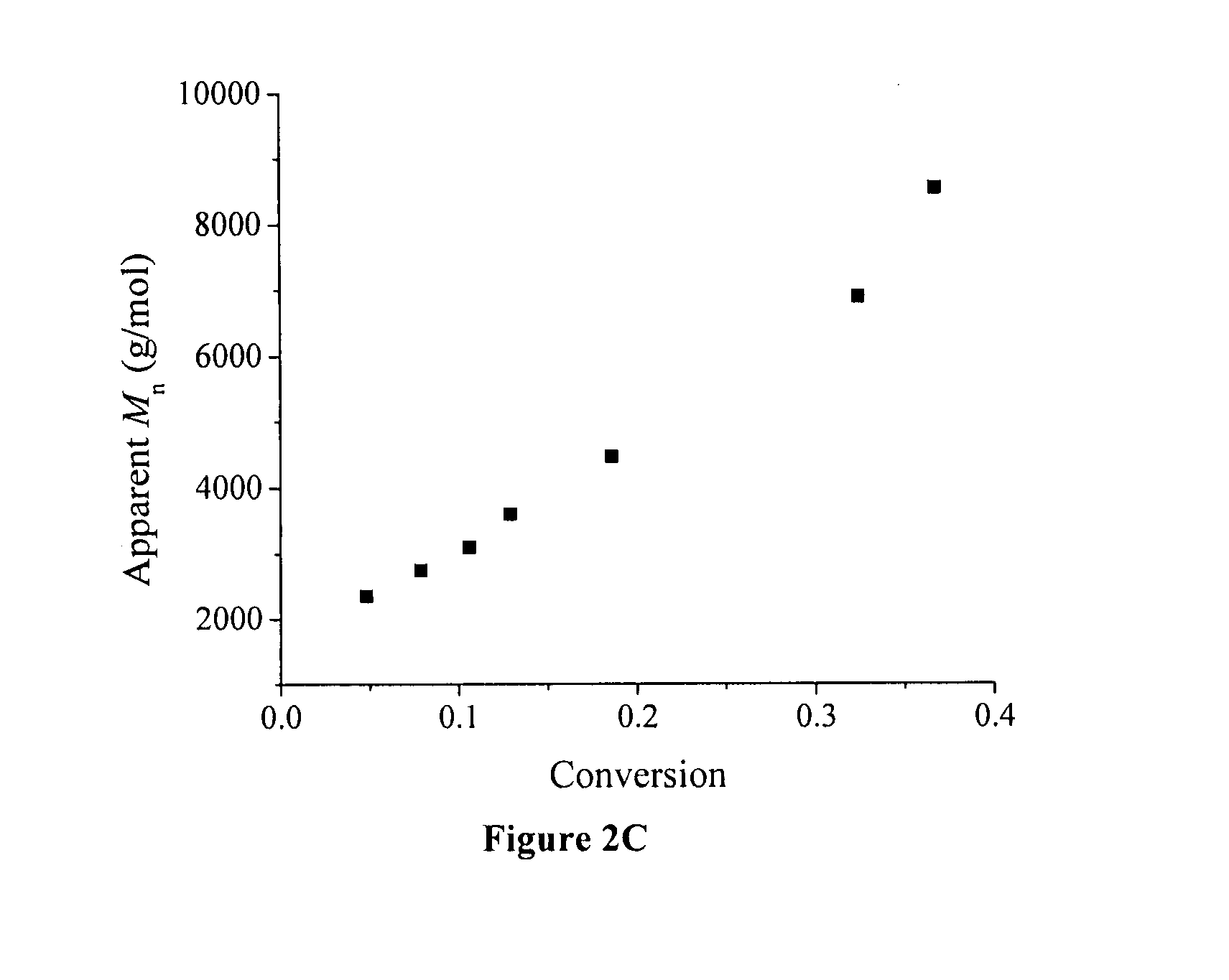Graft copolymers and related methods of preparation
a technology of copolymer and graft, applied in the field of graft copolymer, can solve the problems of poor solubility, wettability, miscibility, and poor solubility of fluoropolymers, and limit their application in the field of filtration membranes and medical devices, so as to achieve good control of molecular weight and polydispersity, and minimize unwanted side reactions
- Summary
- Abstract
- Description
- Claims
- Application Information
AI Technical Summary
Benefits of technology
Problems solved by technology
Method used
Image
Examples
example 1a
Model Reactions
[0070] In the model reactions, poly(chlorotrifluoroethylene) (PCTFE) oligomer was used as ATRP initiator to polymerize styrene. In a typical experiment (Run 3, Table 1), PCTFE oligomer (116 mg, containing 1.27 mmol of chlorine), BPy (156 mg, 1 mmol), styrene (10.422 g, 100 mmol), and NMP (10 mL) were added into a 100 mL Schlenk flask. The mixture was degassed via three cycles of freeze-pump-thaw, and the reaction flask was filled with N2. Then, CuCI (50 mg, 0.5 mmol) was added, and the reaction mixture was degassed again followed by refilling the flask with N2. The reaction mixture was stirred until a homogeneous solution was obtained. An initial sample was taken for the monomer conversion measurement. The polymerization was started by immersing the reaction flask in an oil bath at a temperature of 120° C. During the polymerization, kinetics samples were taken from the reaction flask using N2-purged syringes at desired time intervals. The samples were immediately di...
example 1b
[0071] The polystyrene synthesized in Run 3 in Table 1 was further used as macroinitiator to polymerize tert-butyl acrylate (tBA) via ATRP. In a typical block copolymerization (Run 4, Table 1), 1 g of polystyrene (containing 0.32 mmol of chlorine) was dissolved in 6.4 mL of NMP in the reaction flask, and then 4.55 g of tBA and 25.1 mg of CuCI (0.254 mmol) were added. After degassing, the reaction flask was filled with N2. In a separate flask, 44.8 mg of PMDETA (0.259 mmol) was dissolved in 1.99 g of tBA. After degassing (and filling the flask with N2), the PMDETA solution was transferred into the reaction flask using a N2-purged syringe. An initial sample was taken for the monomer conversion measurement. The polymerization was started by immersing the reaction flask in an oil bath at a temperature of 70° C. After half an hour, the polymerization was stopped by cooling to room temperature and exposure to air. Different from the polystyrene macroinitiator, the resultant copolymer did ...
example 2
Graft Copolymerization of Styrene from P(VDF-co-CTFE)
[0072] A typical graft copolymerization of styrene (Run 2, Table 2) is described in the following. 1.0 g of P(VDF-co-CTFE)-31008 (containing 1.03 mmol of CI) was dissolved in 15 mL of NMP in a 50 mL Schlenk flask, and then 4.61 g of styrene (44.33 mmol) was added into the P(VDF-co-CTFE) solution. After the addition of CuCI (86 mg, 0.87 mmol), the polymer solution was degassed through three cycles of freeze-pump-thaw, and then the flask was filled with N2. Separately, 267 mg of 2,2′-bipyridine (BPy, 1.71 mmol) was dissolved in 5 mL of NMP in a 25 mL Schlenk flask, and the solution was degassed, followed by filling the flask with N2. The bipyridine solution was then transferred into the reaction flask using a N2-purged syringe. An initial sample was taken for the monomer conversion measurement. The reaction flask was then inmiersed in an oil bath at 120° C. During the polymerization, kinetics samples were taken from the flask usin...
PUM
| Property | Measurement | Unit |
|---|---|---|
| polymerization time | aaaaa | aaaaa |
| molar ratio | aaaaa | aaaaa |
| molecular weight distribution | aaaaa | aaaaa |
Abstract
Description
Claims
Application Information
 Login to View More
Login to View More - R&D
- Intellectual Property
- Life Sciences
- Materials
- Tech Scout
- Unparalleled Data Quality
- Higher Quality Content
- 60% Fewer Hallucinations
Browse by: Latest US Patents, China's latest patents, Technical Efficacy Thesaurus, Application Domain, Technology Topic, Popular Technical Reports.
© 2025 PatSnap. All rights reserved.Legal|Privacy policy|Modern Slavery Act Transparency Statement|Sitemap|About US| Contact US: help@patsnap.com



